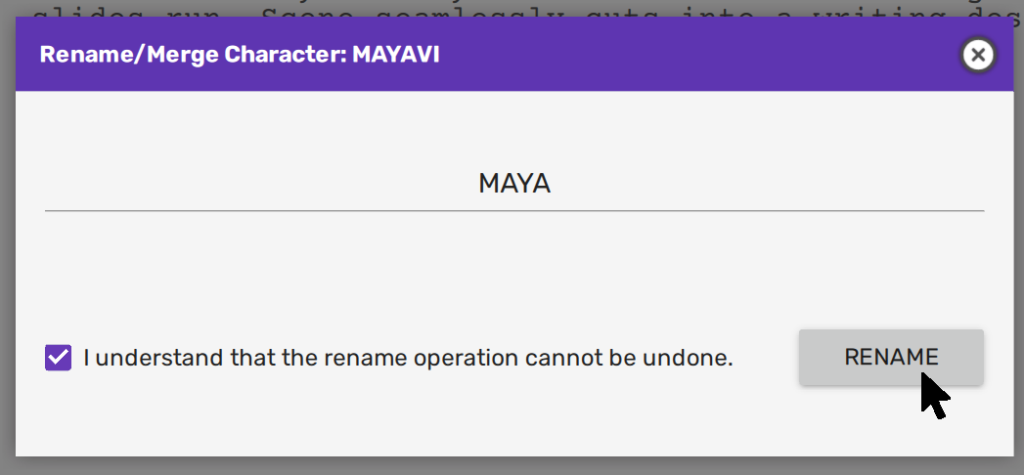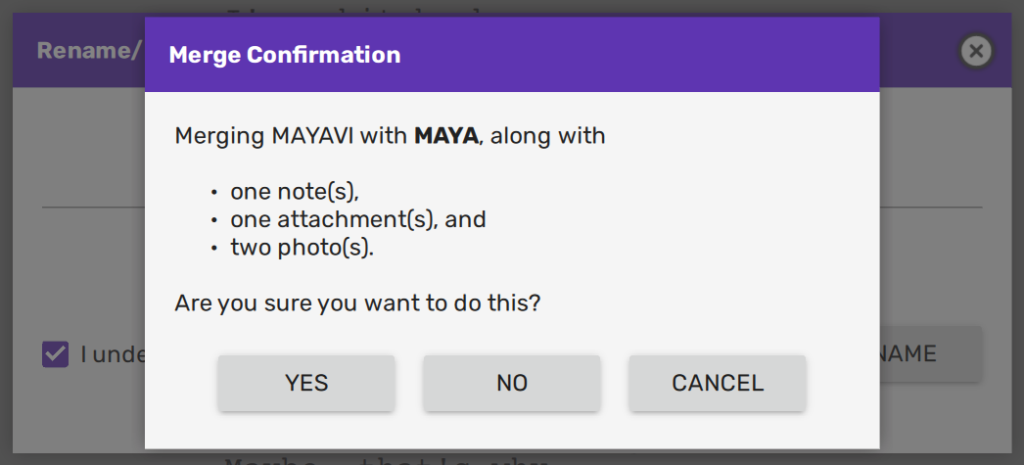Scrite has been installed nearly 30,000 times since its first release four years ago. We have nearly 20,000 registered users, and roughly 4,000 users regularly write every month on Scrite. Our Discord community has more than 1200 people on it. Our tribe is growing, and we want to continue innovating and building the best screenwriting app possible for writers.
After ten months, we are ready to release version 0.9.5 beta. On this page, we outline all the changes in this version. But if you just want to grab the update, then head to the Download/Upgrade section now.
If you have any questions or comments, please reach out to our team and community on Discord.
Table Of Contents
Complete UI overhaul
The entire UI layer of Scrite has undergone drastic re-engineering. You will notice quite a few UI elements from the previous versions no longer present, although we have taken care to make sure that the app doesn’t look intimidatingly different.
As a screenwriter, these may not matter to you. What matters is that the app works to help get your screenplays out. Fear not; Scrite continues to let you churn out blockbuster screenplays. Here we enumerate some of the new features in the latest update.
Home screen
The first thing you will notice when you update to 0.9.5 is the new home screen. It brings together templates, Scriptalay, recent files, vault, open, and import options into one simple and very good-looking screen.

From this home screen, you can either
- start a new document by clicking on any of the templates on the top left,
- download and open a screenplay from Scriptalay,
- open a Scrite document from the disk,
- recover an unsaved document from the vault, or
- import a screenplay from Fountain or FDX formats.
On monitors with high resolution, the home screen makes use of additional space to show a much larger banner on the top.

You can hover the mouse over any of the templates or scripts in Scriptalay to see beautiful cover art in place of the Scrite banner on top.

Simply click on any of the templates or scripts on Scriptalay to download and open them. That’s it.
Since the home screen brings so many options together, we no longer have separate buttons for new, open, import, and Scriptalay. However, for historical reasons, their keyboard shortcuts are mapped to launch the home screen.
We no longer show recent files in a menu. They are shown on the home screen itself. As you open files on Scrite, they will all be collected into a recent file list and shown on the home screen itself.

Notice how the home screen pulls cover art and logline from your screenplay and beautifully plasters them all over the banner on top.
Clicking on the Scriptalay icon on the bottom left moves Scriptalay to a secondary page once you have files in your recent file list.

We will continue to iterate and fine-tune the home screen in future updates. We think you will find it visually appealing and productive.
New settings dialog
The new settings dialog makes it so much more easy to find all your application settings.

In the previous versions, the application settings dialog showed both application and document settings; now it only shows application settings.
The settings are now nearly categorized into five tabs.
- Application
- Structure
- Screenplay
- Notebook and
- Language
Application settings
In this tab, you can configure general application settings. Starting with this version, you will also be able to configure the application theme.

Currently, it is only possible to alter the accent color. In future versions, it will be possible to switch to dark mode as well.
Structure settings
In the Options page within this tab, you can edit the parameters of the structure canvas.
The Story Beats page within this tab, lets you configure the default global story beats that you can use to tag your index cards. To learn more about this, click here.
The Index Cards page within this tab lets you configure up to five fields that you can display on index cards and within the comments panel of the screenplay editor. To learn more about this, click here.

Screenplay settings
The Options page lets you configure key parameters in the screenplay editor.
By default,, “Spell Check” is turned off. Please turn it on if you would want Scrite to highlight spelling mistakes. Currently this feature works only for English text.

The Formatting Rules page lets you customize formatting options for various paragraph types. The look and feel of this have now changed. We believe that this UI is far easier to use than what we had before. Let us know your feedback on Discord.

The Page Setup page on this tab provides options to configure the page size to use while generating PDFs, fields to show in the header and footer, and also options related to watermarks.

Language settings
The Fonts page in this tab lets you configure the font to use for each of the languages supported in Scrite.

The Transliteration page is where you can configure input methods to use for each of the languages supported in Scrite. By default, Scrite offers a built-in transliterator. However, it may not be the most intuitive transliterator for most users. You can enable phonetic input methods in your OS and map them to specific languages on this page. To learn more about this, click here.

Index card fields
In an early version of Scrite, index cards on the structure canvas featured additional fields, as advised by Blake Snyder in his book “Save the Cat.”
However, we had to roll back because many writers were not happy with the fields we had bundled with the app. With version 0.9.5 beta, we are reintroducing this feature by allowing users to configure up to five fields of their choice. To learn more about this, click here.

Share menu
The export and report menus are now merged into a single menu called “Share.”

Merge characters
For a long time, Scrite would let you rename characters easily. With version 0.9.5, you can now merge two characters just as easily.
Suppose that you have a screenplay where you may have accidentally used two names for the same character. In this case, Maya and Mayavi.

You may want to merge Mayavi into Maya across the entire screenplay, even if the name is used in action or dialogue paragraphs. Just like you would rename characters, you can click on Mayavi and select the “Rename/Merge Character” option.

Scrite will present a dialog for you to enter the new character name. In that dialog box, write the name of the character you want to merge this one with.

Now, upon clicking the “Rename” button, you will notice that Scrite recognizes it as a merge workflow and will ask you to confirm it.

Upon clicking “Yes” in this dialog box, Scrite not only changes Mayavi to Maya everywhere in the screenplay, but it will also move notes, attachments, and photos associated with Mayavi with the notes, attachments, and photos of Maya.
Adding multiple characters in notebook
Previously, you could only add one character at a time to the notebook. But with version 0.9.5 beta, you can now add multiple existing characters to the notebook simultaneously.


Page and time lengths
Before version 0.9.5 beta, users could gauge scene lengths by looking at cards on the timeline in the structure tab, but not in the screenplay editor tab. Now, with this update, you can enable page and time lengths in the side panel, as long as time estimation and page count are enabled.

Please be aware that the app evaluates scene duration and page lengths as you type, which could slow down responsiveness, particularly when working on large screenplays. We’re actively working on optimizing this aspect.
Drag and drop multiple photos or attachments at once
Before version 0.9.5 beta, you had to drag and drop photos or attachments into the notebook one by one. Now, with this update, you can drag and drop multiple items at once, and Scrite will accept them all together.
PDFs are shown in a dialog box
Before, PDF files appeared in an overlay, sometimes causing users to lose track of where the PDF was generated. Now, this problem is resolved by displaying PDF files in a dialog box instead.

Scale back to plain-text notes
By default, Scrite provides a rich text editor for editing characters, scenes, and story notes. However, we’ve observed that on some computers, the rich text editor can freeze, leading to app crashes. Although we’ve fixed this problem in the latest beta update, if you still encounter it, you can switch to plain-text notes by unchecking the “Use Rich Text Notes” option in the “Settings > Notebook” page.

Copy improvements
Before this version, Scrite would copy your scenes as plain text to the clipboard for pasting into other apps. However, plain text doesn’t have formatting, so it depended on other apps to interpret it as screenplay elements. Now, with version 0.9.5g, Scrite copies your scenes in fountain format to the clipboard, making it simpler for other apps to understand your scene content.

Please note that Scrite continues to use an internal format for copying text between Scrite instances, which makes copy-and-paste far more accurate.
You can now copy multiple scenes simultaneously from either the scene-list panel or the timeline in the structure tab. Afterward, you can paste their content into another app in fountain format.

Paste improvements
In version 0.9.5g, Scrite can understand plain text in fountain format from your clipboard. So, when you copy scene content from another app, it’ll paste the nicely formatted text. If what you paste isn’t properly formatted in fountain text, Scrite will just paste it as plain text.

Scrite usually does a good job with formatting, but you might still have to tweak things manually to fix any formatting mistakes.
Note: If the text on the clipboard includes multiple scene headings, Scrite won’t generate additional scenes during pasting. Instead, scene headings will be pasted as Action paragraphs. You’ll need to either manually utilize the “Split Scene” function to generate multiple scenes or refer to the “New from Clipboard” option on the Home Screen, which is explained next.
Export text and fountain files to the clipboard
Starting from version 0.9.5g, you can export fountain and plain text versions of your screenplay directly to the clipboard. This handy feature eliminates the need to export to a disk file, open it, and then copy and paste contents elsewhere.

New from Clipboard
Version 0.9.5g introduces a new option on the Home Screen called “New from Clipboard.” This option becomes available only when there is text in the clipboard.
When you click on the “New from Clipboard” option, a new Scrite document will be created, importing the contents of the clipboard interpreted in fountain format.

This feature makes it easy to swiftly create a new screenplay by copying text from a third-party app.
Use custom fonts for languages
Previously, Scrite limited font selection for languages other than English. But with version 0.9.5g, you can now assign any font installed on your computer to languages other than English.

Please note: Scrite supports only one font per language. All other fonts displayed in this dialog box are those installed on your computer, either by you, the operating system, or other apps. If you don’t see a font in this list, it’s likely because it’s not installed on your computer. You’re welcome to download and install custom fonts from trusted sources, but providing custom fonts is not a service we offer.
What do you think about these updates? Do you have any feedback, or a word of appreciation, or perhaps you need more information about one or more features? Do let us know on Discord.